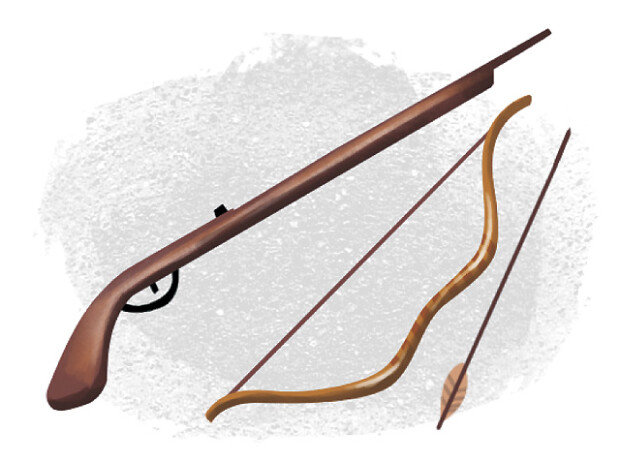Rifles and bows
Rifles and bows
Posted August. 20, 2019 07:42,
Updated August. 20, 2019 07:42

Interpretations about the cause of Korean military’s defeat in the Japanese invasion in 1592 provide a glimpse into that era concerned. In the 1970s, it was the rifle. As a kid, I heard stories like this. Officials made reports at the Royal Court that Japanese soldiers are carrying a stick, which looks like a red maple tree, and it kills whatever it aims at. That was the first report of Korean army after seeing the Japanese rifle in a battlefield. The story still sounds scary.
In fact, the Joseon Dynasty knew about the existence of Japanese rifles though it may have been unaware of their tactical capabilities. Such an interpretation expresses remorse or anger towards the Joseon Dynasty, which did not put much emphasis on modern science technologies. In the late 1980s, there was an abrupt emergent of an argument that Joseon’s archery trumps Japanese rifles. They say the Korean bows are a winner in terms of range, velocity, and in the depth of penetration. In addition, bows are weatherproof whilst Japanese rifles are rendered useless on rainy or windy days. Recently, there was a debate over this topic, and this article won’t be a venue for rebuttals. But the fact remains intact; the Joseon officials from the 16th century who experienced the Japanese invasion and used both the bows and rifles chose the latter.
Korea’s successful industrialization boosted the sense of pride for its people, and the love for tradition morphed into glorification. There had been similar cases in the 1960s or 1970s, but their confidence grew so much as to make out the case for the superiority of traditional craftsmanship over modern technologies. Then, what is the cause of our defeat in the Japanese invasion? Here, some angry criticism is voiced about the Joseon government, its elites, and the yangban gentries. I’ve encountered quite a few cases of extremity where they are quick to inveigh and fume at King Seonjo. I am not defending anyone here. The gist is that such criticism cannot serve as a historical lesson if it is simply a blind anger towards the inability of individuals or the problems stemming from the character and the conscience of a few. Issues over capacity, social structure, and the concomitant public sentiment and sets of values continue to be left unattended, and the upshot is that resorting to sophistry or witch hunting as well as passing the buck prevails over the proposal of a working solution far too often. A failure to understand the cause of a failure will lead to another failure.
tjdrud0306@donga.com







